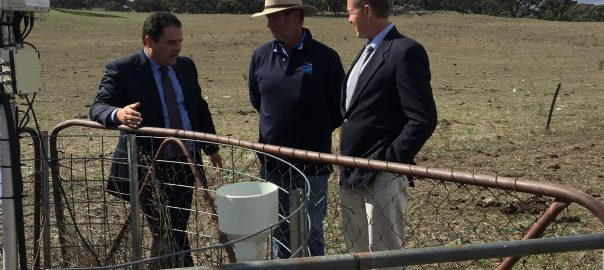$1 billion for National Landcare Program

The Coalition Government has underlined the importance of Landcare by investing more than $1 billion in the National Landcare Program (NLP).
Member for Barker Tony Pasin said the NLP was a key demonstration of the Coalition’s commitment to supporting strong natural resource management and the environment in Barker.
Mr Pasin said the program continues to focus on practical, on the ground ways to improve issues like soil health, erosion management and water quality, making the program relevant to all land managers – but especially farmers.
“Our farmers manage about 53 per cent of our landmass and with global demand for food and fibre set to double by 2050 it’s important that we keep Landcare front and centre to assist them to manage our natural resources,” Mr Pasin said.
“Every farming family I know wants to pass on their land in better shape than when they got it and our investment will help them achieve those goals.
“The NLP will focus on applying well researched and innovative land and water management techniques and tools on the ground, including an Agriculture small grants program and on-going investment in regional delivery.”
Mr Pasin said that for more than 25 years, the Landcare movement has been protecting, restoring and sustaining soils, water and the diversity of Australia’s unique plants and animals and its threatened species.
“This $1 billion in funding is further evidence of this government’s commitment to continue this important work of looking after our environment,” Mr Pasin said.
“We will continue to support on-ground community projects that harness local know-how and deliver practical and tangible results.”
Fast facts:
- In Australia, there are around 5400 Landcare groups and 100,000 active volunteers in those groups.
- Over 80 per cent of Australian farmers are involved in Landcare.
- The annual economic cost of managing pest animals in Australia is estimated at about $1 billion. The cost of managing weeds in Australia is four times that, at $4 billion.
- More than 80 per cent of our mammals and 90 per cent of our trees, ferns and shrubs occur nowhere else on earth.
- The Great Barrier Reef is a World Heritage Site encompassing 3000 coral reefs. It is worth approximately $5.2 billion to the tourism economy alone.
- Resources for Indigenous Protected Areas will also be boosted to help provide employment, education and training opportunities for Indigenous people in remote areas while protecting our cultural heritage into the future.
Contact: Charlotte Edmunds – 8531 2466








